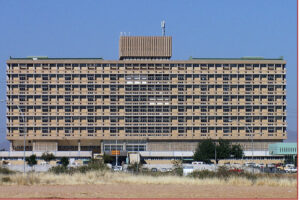
By: Nghiinomenwa Erastus
The private health sector serves 0nly 15% of the country’s 2,5 million population, while the public health facilities cater for the rest.
Despite this, the private health sector absorbs a large portion of the country’s medical workforce, with one-third of all physicians(doctors), two-thirds of pharmacists, and 20% of nurses.
This is according to the background information presented in the country’s National Quality Management Policy (2021/22- 2025/26), which was released in the second half of 2021.
The policy background information paints the picture of experts distribution between the public and private health facilities- explaining the long queues and hours at public hospitals as patients wait for medical experts.
However, the policy did not elaborate why the private sector keeps taking up more health and medical experts and serves few members of the populace- and why the public health sector struggles to attract and retain skills.
Namibia’s medical workforce ratio per population in the public sector in 2018 stood at 0,33 physicians/doctors per 1 000- representing available doctors in the public hospitals for the 85% of the 2,5 million served by government health services.
The situation is a bit better for nurses as the ratio indicates 2,02 nurses per 1 000 population.
According to the Quality Management Policy, the public comprises 373 health facilities with 7 551 beds.
The country has only one referral hospital after 32 years of independence, four intermediate hospitals, 30 district hospitals, 47 health centres, and 291 clinics.
The private health sector has 101 health facilities that offer 1 144 beds.
The very old report of the Presidential Commission of Inquiry on the ministry of health (2013), as quoted by the 2021 quality policy, highlighted the shortage of health professionals such as doctors, nurses, pharmacists, and allied health workers.
Plus other long well, documented issues facing the public health sectors.
Another old health facility census (2009) quoted by the country’s National Quality Management Policy highlighted that facilities do not meet international standards for infection prevention.
The latest (2020) Strengths, Weaknesses, Opportunities, and Threats (SWOT) analysis to complete the Quality Management Policy highlights insufficient financial and human resources and gaps in knowledge and skills.
The SWOT analysis also pointed out the exposure of the public sector to specialized services, poor maintenance culture, and the inconsistency in supply chain pharmaceutical stockouts.
Furthermore, the country’s poor sanitation status has been highlighted as a burden on health care as it leads to disease outbreaks.
According to the National Quality Management Policy, the top causes of mortalities (death) and morbidities (sickness) are HIV/AIDS, neonatal disorder, respiratory infections, diarrhoeal, and tuberculosis.
The quality of health care in Namibia is locally defined in the policy as health care that is timely, safe, respectful, responsive, and improves health outcomes in the country.
As a result, the National Quality Management Policy will pursue dimensions such as quality, accessibility, affordability, effectiveness, efficiency, safety, people-centredness, timeliness, equitability, and integrated health care services.
The current five-year NDP5, which is coming to an end this year, aimed to provide access to quality health care for its population, increasing health-adjusted life expectancy from the current 59 years to 68 years.
Moreover, reduce mortality for mothers and children.
Under the current budget as tabled by the treasurer, the Ministry of Health and Social Services is the second biggest beneficiary of the country’s pool of resources- for the next 12 months, it will have access to N$8,4 billion.
A big chunk (N$6,4 billion) will be for the Department of Curative and Clinical Health Care- around N$4,1 billion will be spent on personnel’s remuneration for the financial year.
While N$1,7 billion will be spent on the procurement of goods and services, around N$300 million will be used to acquire capital assets.
The Curative and Clinical Health Care programme aims to provide a broad range of programs to deliver services for in-patient and outpatient health care services to match the need of the communities.
These include referral hospitals (outpatient and in-patient services): provide specialized clinical and diagnostic services for patients.
To develop and strengthen the skills and knowledge of health workers through clinical training of professional nurses, medical and pharmaceutical interns, and paramedical workers. Email: erastus@thevillager.com.na









Comments